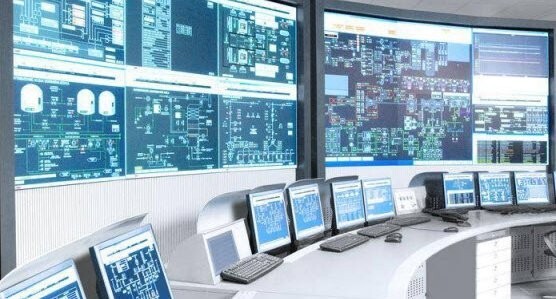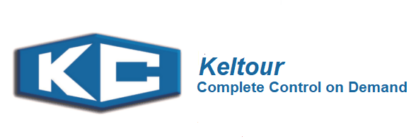DCS Control Systems
What is a DCS Control System?
In today’s fast-paced and interconnected industrial landscape, the demand for precise, efficient, and streamlined control systems has never been greater. Enter the world of Distributed Control Systems (DCS), an innovative technology that has transformed the way industries manage their operations. DCS control systems have become the cornerstone of modern industrial automation, from manufacturing plants to power generation facilities, oil refineries to chemical processing units.
DCS control systems revolutionize industrial operations by decentralizing control functions. They provide operators with comprehensive views and fine-grained control over individual processes and equipment. Through real-time data analysis, operators can optimize operations, enhance safety measures, and achieve uninterrupted operations, even during unexpected disruptions. The scalability and adaptability of DCS control systems enable industries to expand seamlessly, integrate new processes, and meet evolving demands. Witness the incredible potential of DCS control systems as we showcase real-world examples and inspire you to unleash new levels of efficiency and precision within your own operations.
Whether you are an industry professional looking to expand your knowledge or an enthusiast eager to explore the cutting-edge technologies shaping our world, this blog series will serve as your gateway to understanding the incredible potential of DCS control systems. With our research, we aim to provide you with a comprehensive understanding of this transformative technology and inspire you to unlock new levels of efficiency and precision within your own operations.
So, fasten your seatbelts, prepare to delve into the world of DCS control systems, and get ready to witness the future of industrial automation unfold before your eyes.

FAQ
What does a DCS system do?
A Distributed Control System (DCS) performs a multitude of functions in industrial settings to monitor, supervise, and control complex processes. Here are the primary tasks that a DCS system accomplishes:
Process Monitoring
A DCS system continuously collects and monitors data from various sensors and instruments distributed throughout the industrial plant. It captures information about process variables such as temperature, pressure, flow rate, level, and more. This real-time monitoring allows operators to view the ongoing processes and make informed decisions comprehensively.
Control and Regulation
DCS systems provide precise control over industrial processes by executing control algorithms based on the collected data. They send control signals to actuators, valves, motors, and other devices to regulate process variables and ensure optimal operation. DCS systems enable efficient and stable process control by maintaining desired setpoints and adjusting parameters.
Alarm and Event Management
DCS systems employ advanced algorithms to detect abnormal conditions or deviations from predefined thresholds. When such situations arise, the system generates alarms and alerts for operators to take immediate action. This proactive approach helps prevent accidents, equipment failures, and other critical incidents, ensuring safety and minimizing downtime.
Data Storage and Analysis
DCS systems store vast amounts of historical data regarding process variables, alarms, and events. This data serves as a valuable resource for analysis, troubleshooting, and performance optimization. By identifying trends, patterns, and correlations, operators can make data-driven decisions, improve processes, and enhance overall efficiency.
Human-Machine Interface (HMI)
DCS systems provide operators with an intuitive and centralized interface to interact with the control system. The HMI presents real-time process information, alarms, trends, and other relevant data in a user-friendly manner. Operators can monitor the status of equipment, control settings, and make adjustments as needed, ensuring efficient operation and quick response to changing conditions.
System Integration and Communication
DCS systems facilitate seamless integration with other control systems and equipment within the industrial plant. They establish communication networks that enable data exchange between various subsystems, allowing for coordinated operation and efficient collaboration. Integration with other systems, such as enterprise resource planning (ERP) or asset management systems, enhances overall plant productivity and decision-making.
What is the difference between a PLC and a DCS?
While both programmable logic controllers (PLCs) and distributed control systems (DCS) are used in industrial automation, the two have key differences. PLCs are commonly used for discrete control tasks and smaller-scale applications, while DCS systems excel in large-scale industrial processes that require comprehensive monitoring, control, and integration. PLCs offer flexibility and determinism at a local level, whereas DCS systems provide centralized control, distributed architecture, and advanced functionalities for complex plant-wide processes. As such, the choice between PLC and DCS depends on the industrial application’s specific automation needs, scale, and complexity.
What is an example of a DCS system?
One widely used example of a distributed control system (DCS) is the ABB 800xA system. Designed for industries such as oil and gas, power generation, and chemical processing, ABB 800xA integrates process control, safety, and electrical control into a comprehensive solution. Its scalable architecture and seamless integration capabilities allow efficient control and monitoring across plant areas. Operators benefit from a user-friendly interface, real-time data access, and advanced control algorithms, enabling them to optimize performance and ensure safety. With features like alarm management, historical data storage, and analytics, ABB 800xA empowers industries to make data-driven decisions and achieve process optimization.
DCS systems like ABB 800xA play a vital role in numerous industries worldwide. By streamlining operations and enhancing control, these systems drive efficiency and productivity. With their ability to integrate diverse subsystems and provide comprehensive monitoring and control, DCS systems have become an integral part of modern industrial automation, enabling industries to achieve higher levels of operational excellence.
What hardware is used in DCS?
A wide combination of hardware components is used to facilitate control, communication, and data acquisition in industrial settings. Here are some key hardware components commonly found in DCS systems:
Controllers
DCS systems typically employ controllers as the central processing units responsible for executing control algorithms and coordinating system operations. These controllers can be standalone units or rack-mounted modules and have powerful processors, memory, and input/output (I/O) capabilities.
Input/Output (I/O) Modules
I/O modules interface with the DCS system and field devices such as sensors, actuators, and instruments. They convert analog or digital signals from field devices into digital data that the controllers can process. I/O modules can be specialized for specific types of signals (analog, digital, discrete) and are often connected to the controllers through communication networks.
Communication Networks
DCS systems rely on communication networks to establish seamless data exchange between controllers, I/O modules, and other system components. These networks can be Ethernet-based, utilizing protocols like TCP/IP or industrial automation protocols such as Profibus, Modbus, or Foundation Fieldbus. Redundant network configurations are commonly employed to ensure reliable and fault-tolerant communication.
Human-Machine Interface (HMI)
The HMI component of a DCS system provides the interface through which operators interact with the control system. It includes displays, operator consoles, and graphical user interfaces (GUIs) that present real-time process information, alarms, and control functionalities. HMIs enable operators to monitor processes, make adjustments, and receive critical system notifications.
Servers and Data Storage
DCS systems often incorporate dedicated servers for data storage, historical logging, and analysis. These servers store large volumes of process data, alarms, events, and system configurations. They support data retrieval and trend analysis and provide the necessary computing power for advanced analytics and optimization algorithms.
Redundancy and High Availability
DCS systems often include redundancy features to ensure system reliability and minimize downtime. This can involve redundant controllers, I/O modules, communication networks, and power supplies. Redundancy mechanisms allow for seamless switchover in the event of component failures, ensuring uninterrupted control and minimizing the impact of system disruptions.
Is SCADA same as DCS?
SCADA (supervisory control and data acquisition) and DCS (distributed control system) are related but distinct concepts in the realm of industrial automation. While they share similarities in terms of functionality and purpose, there are fundamental differences between the two:
SCADA systems are typically used for monitoring and controlling large-scale, geographically dispersed processes or systems. They are commonly found in industries such as utilities (power, water), transportation, and infrastructure. SCADA systems focus on supervisory, gathering data from remote field devices, providing visualization and monitoring capabilities, and allowing operators to make high-level decisions.
On the other hand, DCS systems are designed to control and monitor complex industrial processes within a single plant or facility. They excel in continuous control applications and are widely used in industries such as manufacturing, oil and gas, chemical processing, and power generation. DCS systems offer comprehensive control functionality, decentralized architecture, and advanced features for optimizing process performance.
Do you need a powerful computer for DCS?
DCS (Distributed Control System) applications typically require computing resources capable of handling real-time data acquisition, control algorithms, and data processing. While the specific hardware requirements can vary depending on the complexity of the industrial process and the scale of the DCS system, there are certainly some aspects to consider regarding the computer power needed for DCS.
Firstly, processing power is important as DCS applications involve complex control algorithms and real-time data processing. The DCS software’s computer should have a CPU (Central Processing Unit) capable of efficiently handling these computations. This ensures that control algorithms are executed promptly, and data analysis is performed without significant performance bottlenecks.
Secondly, sufficient memory (RAM) is crucial for DCS systems, enabling efficient data handling and quick access to critical system information. Adequate RAM capacity allows the computer to handle real-time data acquisition and storage requirements and support the execution of control algorithms and other software processes.
Thirdly, the computer should have ample disk space to accommodate the application’s storage needs, including historical data, alarms, events, and system configurations. Additionally, considering the importance of data redundancy, a backup or redundant storage solution may be necessary to prevent data loss in case of hardware failures.
Lastly, network connectivity plays a vital role as DCS systems rely on communication networks for seamless data exchange between controllers, I/O modules, and other components. The DCS software’s computer should have reliable network connectivity capabilities, such as Ethernet ports or other network interfaces, to ensure smooth communication within the DCS system.
